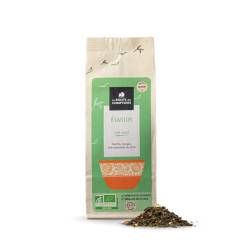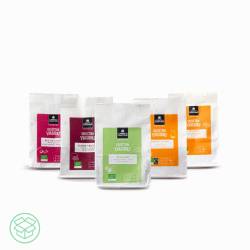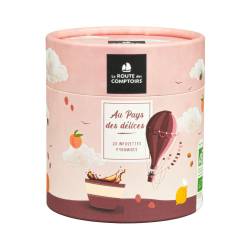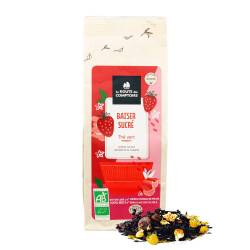Tea is much more than just a beverage. It's a ritual, a suspended moment, a sensory journey with every sip. The most consumed drink in the world after water, it transcends cultures and traditions, from the Indian plains to English parlors, from Japanese ceremonies to Moroccan tea breaks.
We offer you a range of organic and fair trade teas that cultivate both tradition and creativity. Healthy and delicious blends that are good for both your health and the planet, preserving tomorrow’s treasures.
However, choosing a prestigious tea alone is not enough to ensure a successful tasting experience. Even the noblest vintage can disappoint if poorly prepared. Conversely, a more modest tea can reveal its full finesse if a few essential rules are followed. Some speak of the “art of tea,” but this know-how is not reserved for an elite: it relies above all on four fundamental elements.

The 4 Key Elements to Brewing Great Tea
1. Choosing the Right Water
Tea is primarily… water. And not just any kind. Water that is too hard or strongly flavored (chlorine, iron, etc.) will mask the aromatic subtleties of the tea. Ideally, it should be pure, tasteless, and odorless.
- To avoid: highly mineralized waters or water that has been boiled multiple times.
- To favor: filtered water or neutral mineral water. Filtered tap water is often an economical and effective option.

2. Choosing the Right Teapot
The teapot is not just a container. It influences the temperature, the brewing time, and sometimes even the taste.
- Basic rule: reserve your teapot exclusively for brewing tea. Avoid saucepans or multi-use utensils.
- Maintenance: rinse with clear water, no soap or brush. The inner patina – known as "seasoning" – is valuable.
- Types of teapots: Enameled Japanese cast iron: perfect for green teas, excellent heat retention. Yixing clay: ideal for retaining aromas (one teapot per tea type). Glass, porcelain, silver, or pewter: choose according to your preference and tea style.

3. Respecting Infusion Time and Temperature
Each tea has its own requirements. The most common mistakes? Water that's too hot or steeping too long.
Some practical guidelines:
| Type of Tea | Temperature | Steeping Time |
|---|---|---|
| Japanese Green Tea | 70°C | 2 min |
| Chinese Green Tea | 70-80°C | 3 min |
| Black Tea (broken leaves) | 90°C | 3 min |
| Black Tea (whole leaves) | 90°C | 5 min |
| Flavored Black Tea | 90°C | 4 min |
| Oolong | 90°C | 7 min |
| White Tea | 75-80°C | 10 min |
All of these instructions are listed on the back of our tea packages, so you can easily find your way without wracking your brain!
Discover our teas and infusions
Best Practices:
- Scald the teapot before brewing.
- Moisten the leaves briefly while the water is heating.
- Use about 2 to 2.5 g of tea per 25 to 30 cl cup (roughly one heaping teaspoon for whole leaves).
- Remove the leaves or filter at the end of the steeping time to avoid bitterness.

4. Choosing the Right Filter
A good-quality filter allows the leaves to fully open and the infusion to reveal its full potential.
Preferred: Large built-in teapot filters. Unbleached paper filters: biodegradable and hygienic. Cotton filters ("socks"): perfect for large leaves or herbal infusions.

Bonus: A Few Practical Tips
How to Remove Caffeine from Tea?
Want to enjoy tea without the effects of caffeine? It’s possible to partially "decaffeinate" it at home:
- Make a very short first infusion (30 seconds to 1 minute), then discard the water.
- Then brew as usual.
- This method removes a good amount of caffeine while preserving the flavors.
Should You Add Sugar, Milk, or Lemon?
Traditionally, purists swear by plain tea, with no additions. But every culture has its own customs:
- English and Indian people add milk.
- Moroccans heavily sweeten mint green tea.
- Tibetans add yak butter!
In the end, it’s a matter of taste. Tea is universal precisely because it adapts to everyone’s traditions and preferences.
Conclusion
Tea is demanding, but it rewards those who give it attention and care. No need for fancy equipment or expert training: by simply respecting the four pillars of preparation – water, teapot, time, and filter – you’ll discover the full richness and subtlety of this ancient beverage.
So, kettle on!
Linked products





 By Cindy et Benoit
By Cindy et Benoit



